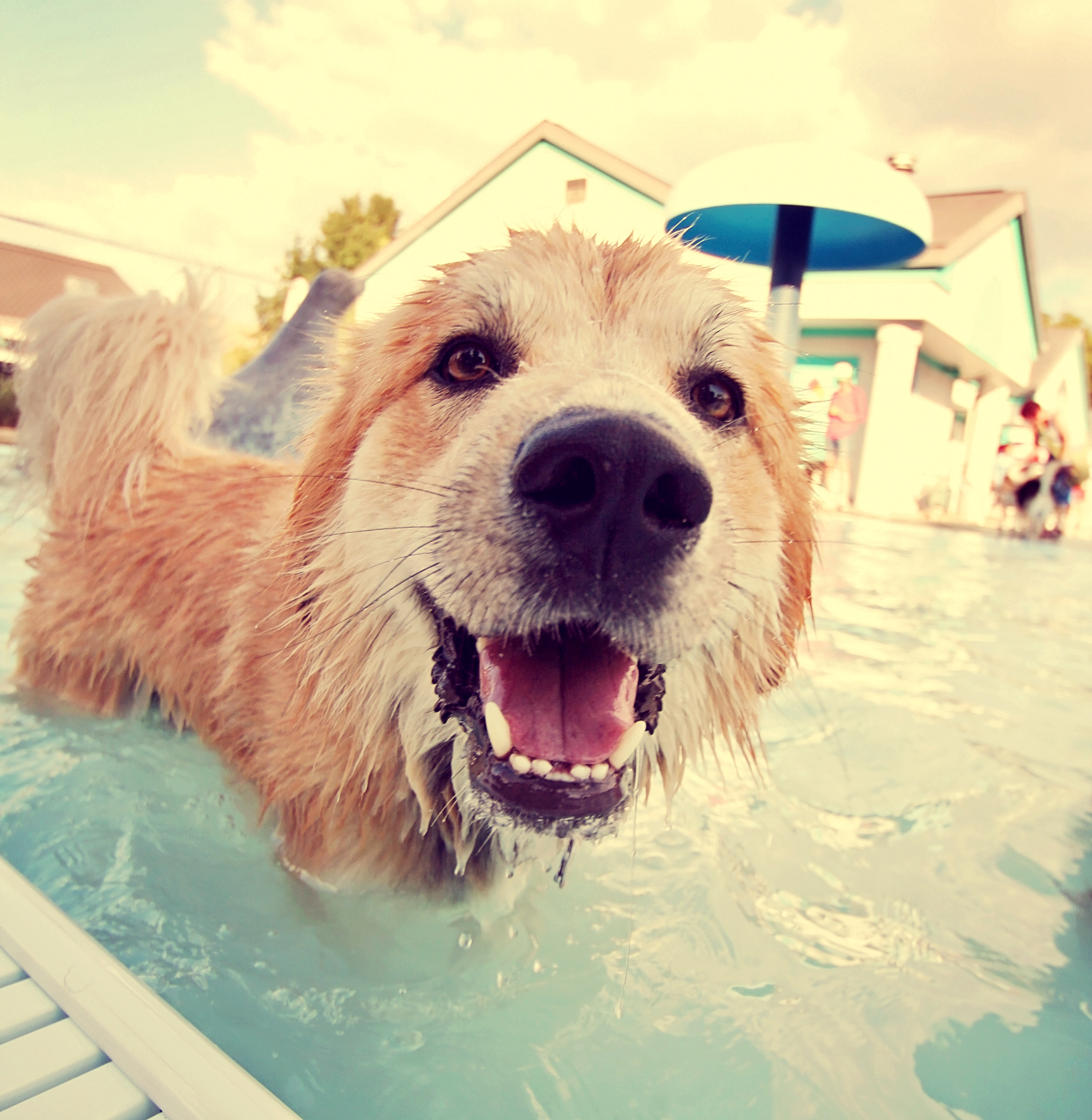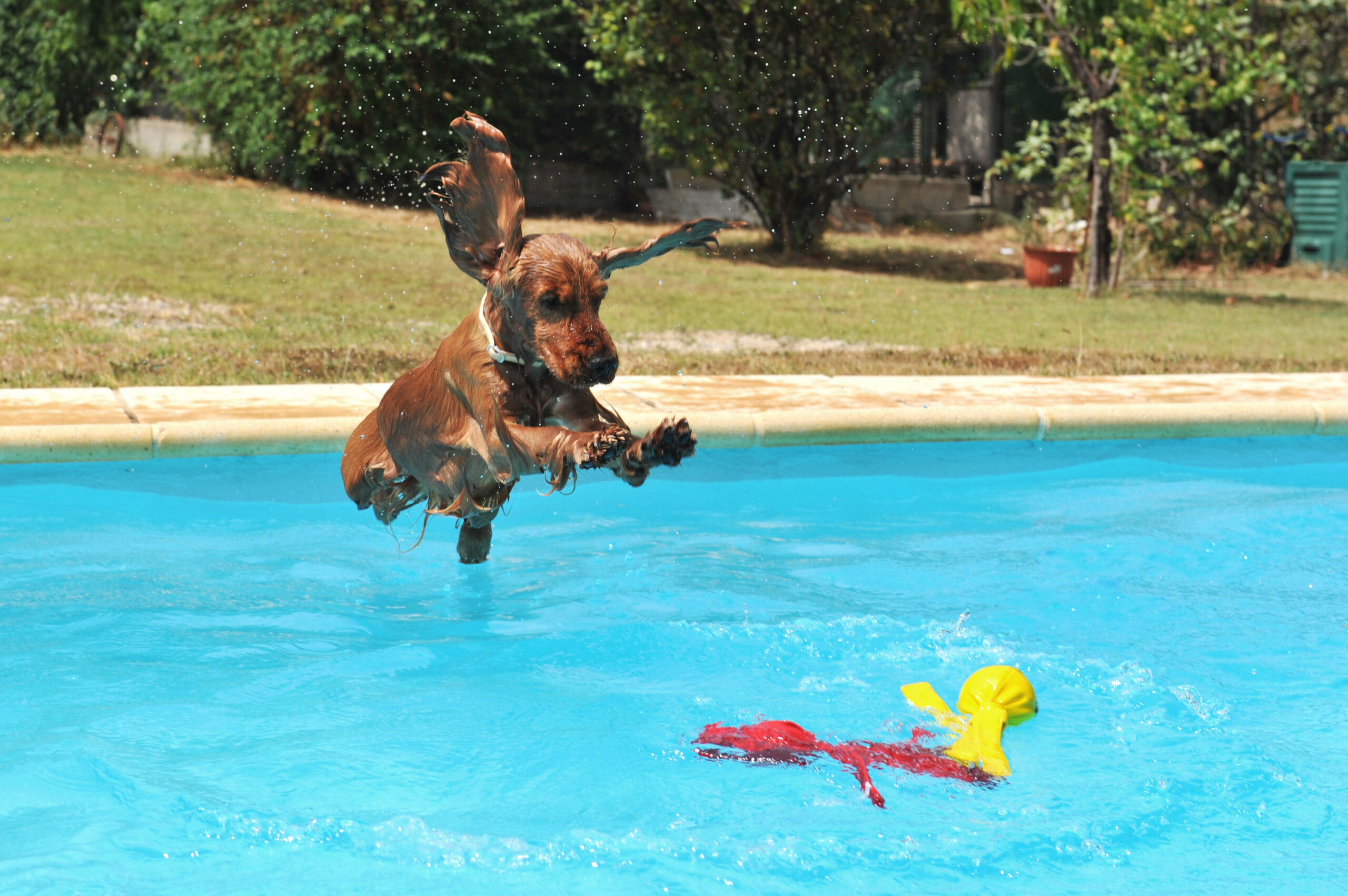You’re a proud pet owner and pool enthusiast, but the two don’t always mix well. Pet hair, skin cells, and other contaminants can wreak havoc on your pool’s maintenance system.
By understanding how pets influence pool hygiene and learning effective cleaning methods tailored for animal-friendly pools, you’ll keep your oasis pristine without compromising your furry friends’ enjoyment.
Dive into our guide to ensure you’re doing everything right in terms of pet-inclusive pool maintenance.

Understanding the Basics of Pool Maintenance
Before we delve into how pets affect pool maintenance, let’s cover the basics so you’ll have a clearer understanding of what’s involved.
Two crucial elements to grasp are chemical balance and the use of pool covers.
Chemical balance refers to maintaining an equilibrium of chemicals in your pool water. This includes checking and adjusting pH levels, alkalinity, calcium hardness, and sanitizer levels. You’re targeting a pH level between 7.2 and 7.6 – it ensures that your sanitizers work effectively without irritating swimmers’ skin or eyes.
Alkalinity acts as a pH buffer, preventing drastic fluctuations that can damage your pool equipment or liner. Calcium hardness is vital to prevent plaster erosion or scaling while adequate sanitizer (like chlorine) wards off bacteria and algae.
Pool covers aren’t just for keeping leaves out; they contribute significantly to maintaining water chemistry too by reducing evaporation which can lead to imbalances.
It’s essential you keep these aspects in check regularly because any imbalance could make your pool unsafe for both people and pets alike.
Understanding these basics will better equip you when we discuss how pets impact the overall maintenance schedule of your pool next.
The Role of Pets in Pool Contamination
You’re probably not aware, but your furry friends can significantly contribute to the contamination of your swimming area. Pets, with their fur and dander, introduce foreign substances into the water that can disrupt the balance of chemical levels. This imbalance often leads to unhealthy conditions such as disease transmission and allergenic reactions.
It’s vital you understand that dogs or cats carry zoonotic diseases – illnesses transmissible from animals to humans. When they swim in your pool, microorganisms causing these diseases may be left behind. Bacteria like Leptospira cause leptospirosis, a condition that humans can contract through infected water. It’s not just about immediate health threats; long-term exposure might lead to allergenic reactions too.
Pet dander, composed mainly of microscopic flecks of skin shed by animals with fur or feathers, is notorious for inducing allergies in susceptible individuals. If it finds its way into your pool water and isn’t effectively filtered out, swimmers could experience allergic reactions ranging from mild itching to severe respiratory distress.
To maintain a healthy swimming environment and prevent disease transmission or allergenic reactions due to pet contaminants, it’s important you adjust filtration systems accordingly and use suitable disinfectants regularly.
Effects of Pet Hair on Pool Filters
It’s crucial to keep in mind that your furry friend’s hairs can clog your filtration system, leading to less efficient water sanitation. This consequence of pet ownership is often overlooked, but it’s a serious issue known as Filter Fatigue.
The presence of pet hair in the pool creates Hairball Hazards which act as physical barriers within your filter. When hair accumulates deep within the filtration matrix, it impedes the flow of water and reduces the overall performance of your filtering apparatus. It’s like a traffic jam inside your filter – nothing moves efficiently.
This strain on your filter results in what we call ‘Filter Fatigue’. Your system has to work harder than necessary, shortening its lifespan and driving up maintenance costs.
To combat these Hairball Hazards, you should consider investing in a high-quality pool skimmer or regularly brushing and grooming your pets before they take a swim. Regular maintenance will also prevent buildup over time. Remember, preventive measures are always cheaper than repairs or replacements later down the line.
Mastering this aspect of pool maintenance ensures you enjoy clear waters while extending the longevity of your pool equipment.

Cleaning Strategies for Pet-Friendly Pools
To keep your swimming space pristine, you’ll need a solid cleaning strategy that tackles those pesky Hairball Hazards. Start by installing a pet-friendly pool filter designed to catch more hair and debris. It’s an effective first line of defense preventing clogging and ensuring your pump works efficiently.
Next, make use of skimmer socks – these are fine mesh nets that fit over your skimmer basket, trapping hair before it reaches the filter. You’ll want to clean them out regularly to prevent overflow.
For Disease Prevention, routine water testing is crucial. Your test should check for pH balance, alkalinity, calcium hardness, and sanitizer levels. Imbalances can harm both pets and humans or encourage the growth of bacteria and algae.
Lastly, Water Disinfection is vital in any pet-friendly pool maintenance regimen. Regularly shock your pool with chlorine or bromine-based products to kill bacteria and other pathogens introduced by pets’ presence.
Remember though: chemicals should be handled with care! Don’t let pets swim until the chemical levels have returned to safe parameters – usually after 24 hours post-shock treatment.
With this thorough approach, you’re well on your way to maintaining a clean, safe swimming environment for everyone – including furry friends!
Pet-Safe Pool Maintenance Products and Tools
Let’s delve into some tools and products that’ll make your cleaning routine easier while keeping it safe for your furry friends.
When maintaining a pet-friendly pool, the primary elements to consider are the disinfectants used for cleaning and the type of pool cover installed.
1. Animal Friendly Disinfectants: You’re after a product that effectively kills bacteria but doesn’t harm animals if ingested in small amounts. Consider green cleaners or those specifically marketed as pet-safe. These usually contain natural enzymes or non-toxic chemicals, ensuring they won’t pose health risks to your pets.
2. Non-Toxic Pool Covers: A non-toxic pool cover is essential not only for preventing debris accumulation but also for ensuring your pet’s safety should they wander onto it. Look for covers made from polyethylene material, which is durable, resistant to UV radiation, and free from harmful substances like lead and phthalates.
3. Automated Pool Cleaners: An automated cleaner can be an absolute game-changer in maintaining a clean pool with minimal effort on your part. Many models are both efficient in removing dirt and safe around pets.
Frequently Asked Questions
How Does the Ph Level of the Pool Water Change After a Pet Swims in It?
When your pet swims in the pool, their hygiene can affect water’s pH level. Bacteria and contaminants from their fur can increase acidity, causing a decrease in pH. Regularly grooming pets helps reduce this impact.
Can Pool Water Have Any Harmful Effects on My Pet’s Skin or Health?
Yes, pool water can affect your pet’s health. High chlorine levels may irritate skin and eyes. Pet allergies can also flare up. Be mindful of water temperatures too; extreme temps aren’t good for pets.
Are There Any Pool Safety Measures That Should Be Taken Specifically for Pets?
Absolutely, pet safety is vital around pools. You should install pet barriers to prevent unsupervised access and ensure emergency exits are available if they accidentally fall in. Regular training for water safety also helps.
Can the Chlorine in the Pool Harm My Pet if Ingested?
Yes, ingesting chlorine can harm your pet. It’s advisable to consider chlorine alternatives like saltwater systems or pet-friendly sanitizers to keep your pool clean and safe for all family members, including pets.
How Often Should I Change the Pool Water if My Pet Regularly Swims in It?
You should change your pool water every three to five years. However, with a pet swimming regularly, consider more frequent changes. Monitor pet hygiene and clean pool toys often for optimal water quality.
